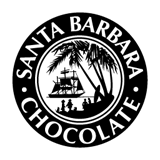Wine and Chocolate Pairings: A Guide to Great Combinations
Pairing wine and chocolate brings together two beloved treats in a way that can feel both celebratory and relaxed. When done thoughtfully, this pairing can bring out the complexity in both, offering flavors that complement, contrast, and sometimes surprise.
Flavanols are antioxidants that are found in red wine and dark chocolate. This mixture might be good for your heart. A darker kind of chocolate can also make your body release serotonin, which may make you feel good. Then, having chocolate and wine together might be more than just a treat. It could be a way to relax with friends or savored at the end of a long day.
Hosting a wine and chocolate tasting, whether casual or carefully curated, can be a satisfying way to explore flavor profiles and have fun. Here’s how to get started and what combinations are likely to work well.
Match Flavor Intensity
Matching the strength and sweetness of the chocolate to the wine is the most important thing to keep in mind when putting them together. Wines that aren't too heavy go well with light chocolate. Strong reds go better with darker, more intense candies.
If the chocolate is too sweet compared to the wine, the wine can taste overly dry, or even bitter. On the other hand, if the wine is too strong for the chocolate, it can overwhelm the subtle cocoa notes.
This is why sweet dessert wines are often suggested with white chocolate, and why rich, high-cocoa dark chocolates tend to pair better with bold, structured reds.
Classic Pairings to Try
White Chocolate with Dessert Wines
Because it doesn't have any cocoa solids, white chocolate has a creamy texture and a light sweetness. It goes well with Moscato d'Asti, Riesling, or even ice wines because they are sweet and fruity. These wines echo the sweetness of white chocolate without overpowering its milder flavor.
Milk Chocolate (34% Cocoa Solids) with Pinot Noir
Milk chocolate has a smooth texture and balanced sweetness. It goes well with Pinot Noir and other light reds. This mix brings out the red fruit flavors in the wine and goes well with the sweetness of the chocolate. A Merlot that tastes like fruit can also work well here.
Dark Milk Chocolate (41% Cocoa Solids) with Merlot
As the cocoa content increases, the chocolate gains more depth while retaining the mellow creaminess of milk chocolate. The soft tannins and dark berry flavors in Merlot go well with this darker chocolate, giving it the right amount of depth, and smoothness.
Dark Chocolate (66%–72% Cocoa Solids) with Shiraz or Zinfandel
This is when the chocolate starts to taste bitterer and stronger. Shiraz and Zinfandel are stronger wines that are fruitier, have a bit of spice, and have more alcohol. These pairings bring out the earthy and smoky tones in the chocolate and balance out the richness of the chocolate with the heat of the wine.
Extra Dark Chocolate (85% Cocoa Solids) with Cabernet Sauvignon or Port
For the darkest chocolate lovers, a bold wine is needed. Cabernet Sauvignon offers structure, tannin and dark fruit flavor. It goes well with extra dark chocolate to make a rich, complicated taste. A fortified wine like Port goes well with the strong, slightly bitter chocolate because it adds sweetness and creaminess. This pair is for people who like strong tastes that last a long time.
Champagne and Chocolate: The Exception
While most chocolate pairings follow the guideline of matching intensity, sparkling wines are an exception. Champagne and sparkling wines can pair with a wide variety of chocolates. The bubbles and acidity help refresh the palate and brighten up even the richest chocolate.
Dark chocolate truffles, dipped strawberries, or white chocolate bark all make a good match for a chilled glass of Brut or Rosé Champagne.
Hosting a Chocolate and Wine Tasting
If you’re planning to host your own wine and chocolate tasting, keep it simple and let the chocolate and wine take center stage. Start with a few types of chocolate with varying cocoa percentages and a range of wine styles. Offer water and plain crackers or bread between tastings to reset the palate.
Here are a few tips:
- Use small portions of each chocolate and wine—this is about tasting, not quantity.
- Taste the chocolate first, then sip the wine to notice how the flavors change.
- Try the same wine with multiple chocolates to find what you like best.
- Take notes to remember which combinations stood out.
Pairings can be subjective, and taste is personal, so what works for one person might not be ideal for another. The goal is to have fun and learn about your own preferences.
Pairing wine and chocolate adds a special touch to any evening, whether it’s a gathering of friends or a quiet moment after dinner. Both offer layered flavor profiles that reveal more with each bite or sip. With a bit of curiosity and experimentation, this classic duo can bring out some unexpectedly great combinations.
